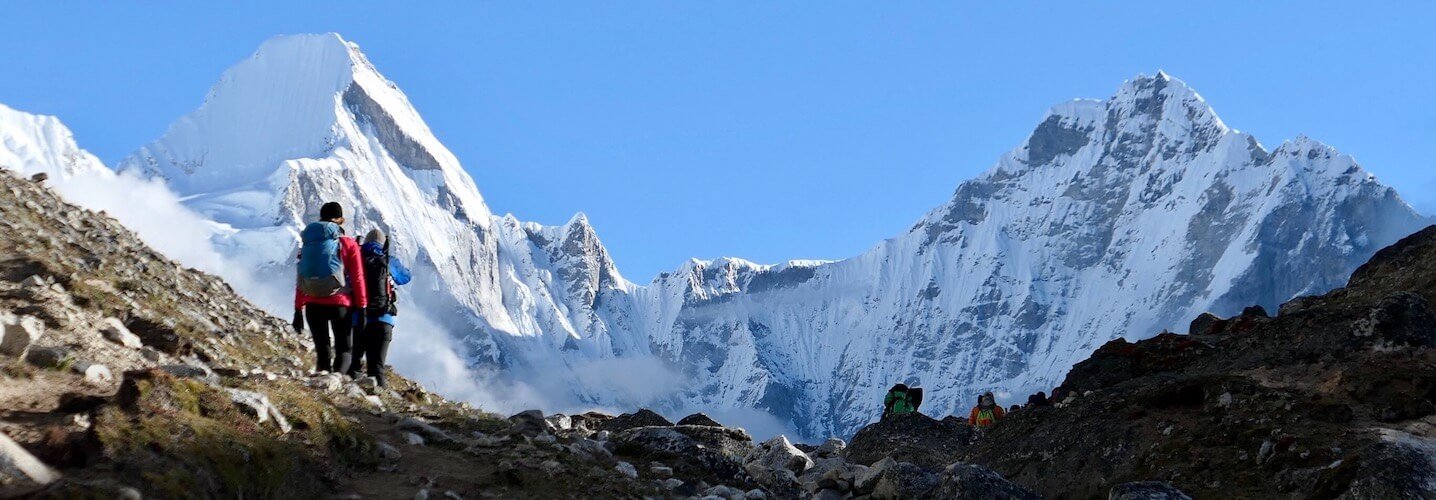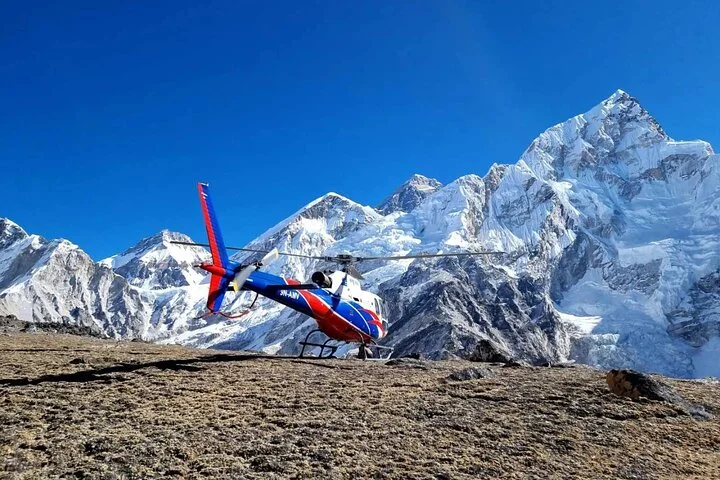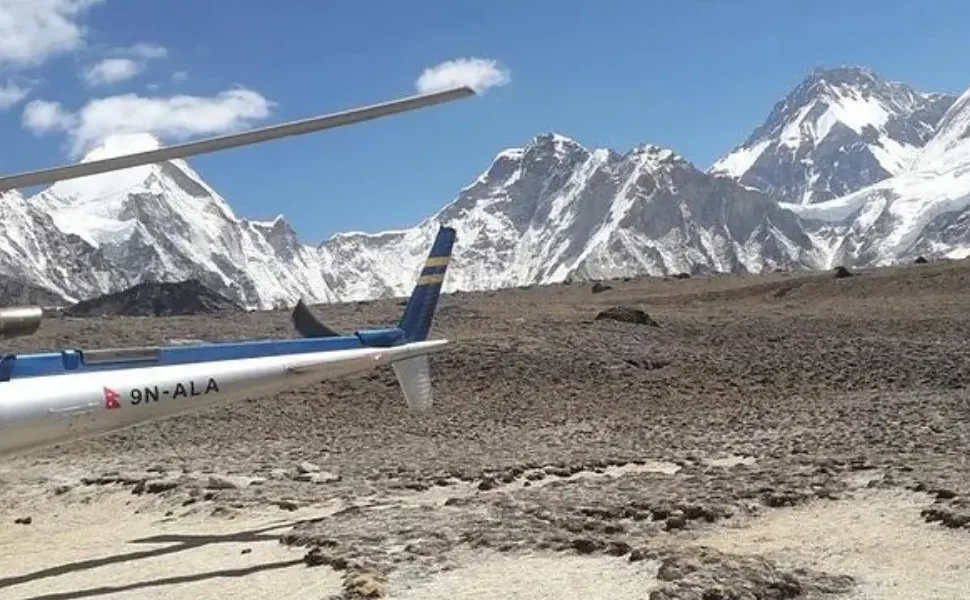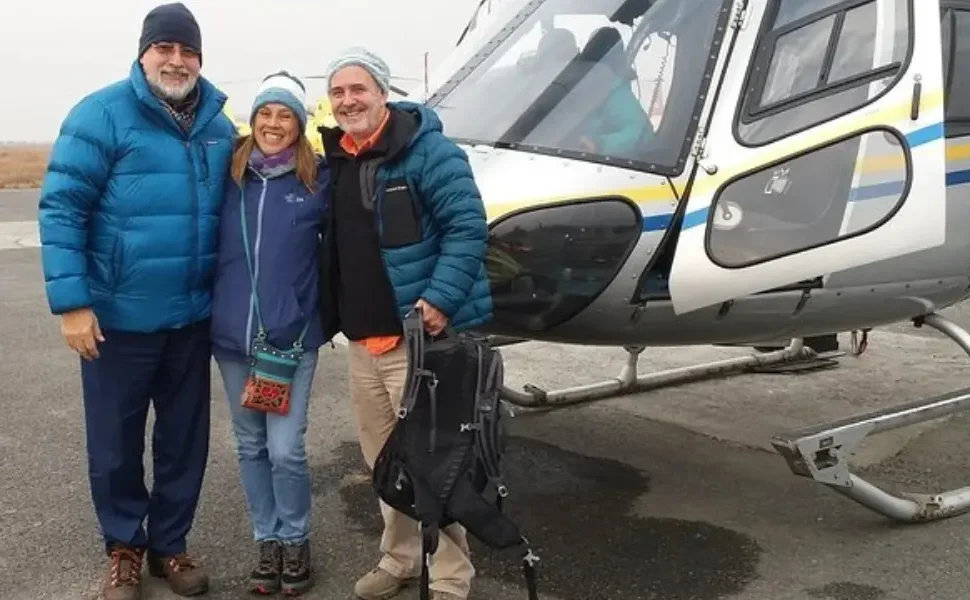At 8,848.86 meters (29,031.7 feet), Mount Everest stands as the highest mountain on Earth, straddling the border between Nepal and Tibet (China). More than just a mountain, it symbolizes power, mystery, spirituality, and human determination.
Known as “Sagarmatha” in Nepali, meaning “Forehead of the Sky,” and “Chomolungma” in Tibetan, or “Goddess Mother of the World,” the peak holds immense cultural and spiritual significance for the people who live beneath its shadow.
Everest is elevated above the clouds and has since become a subject of fascination for travelers, scientists, and adventurers all over the world. Its towering presence is not only the symbolism of the grandeur of nature but also the constant spirit of exploration, which makes people overcome the obstacles and explore the unknown.
The article discusses the entire history of Mount Everest, the geological formation of the mountain, and how it has come to symbolize adventure in the world, spirituality, and the wonders of nature.
Everest is not just the mountain of rocks and ice; it is the living legend, the power of nature, which makes people of all classes divided by age and social status awed and admired.
Formation of Everest
Mount Everest was formed about 60 million years ago due to a powerful geological event—the collision between the Indian and Eurasian plates. This ongoing collision continues to push the Himalayas upward, making them slightly taller each year. Shale and limestone, two sedimentary and metamorphic rocks that were once a part of the Tethys Ocean’s ancient seabed, created the majority of the mountain. These seabed layers were forced upward as the plates collided, creating the majestic Himalayas. Even today, the discovery of marine creature fossils on Everest demonstrates its oceanic origin. This geological process demonstrates the dynamic and constantly shifting nature of the Earth.
Geographical Details
The Mahalangur Himal (sub-range of the larger Himalayas) includes Sagarmatha. It is situated between China’s Tibet Autonomous Region and Nepal’s Solukhumbu District.
Key geographical facts:
- Rivers: The Dudh Koshi River originates in the Everest region.
- Height: 8,848.86 meters (29,031.7 feet), verified by China and Nepal in 2020.
- Coordinates:9881° N, 86.9250° E
- Nearby Peaks: Lhotse (8,516 m), Nuptse (7,861 m), Changtse (7,543 m)
- Major Glaciers: Khumbu Glacier (south), Rongbuk Glacier (north)
The landscape of Everest is rocky, frozen, and ever-changing. The most common route is from Nepal in the south, but the northern route from Tibet is just as difficult. The mountain contains places with their legends and hazards, such as the Hillary Step, South Col, Western Cwm, and Khumbu Icefall.
Naming History
Despite being known as Everest worldwide, the peak is known by various names depending on historical and cultural contexts. It is known locally in Nepal as Sagarmatha, which translates to “Forehead of the Sky.” It is referred to as Chomolungma, or the “Goddess Mother of the World,” in Tibet. In 1865, the Royal Geographical Society adopted the name “Everest.” The British Surveyor General of India, Andrew Waugh, gave it the name Sir George Everest in honor of his predecessor, who had never set eyes on the mountain. Although the local names still have greater significance for the people who live close to the mountain, the name gained widespread acceptance in the West.
Cultural Essence of Everest
For the Sherpa and other Himalayan communities, Mount Sagarmatha is a sacred place. It is regarded as a spiritual being in addition to a natural giant. Before ascending, many Sherpas conduct rituals to ask the goddess Miyolangsangma for her blessings because they think she resides on the mountain.
The region’s spiritual center is the 3,867-meter-high Tengboche Monastery. Before climbing, climbers frequently take part in a Puja ceremony there. Prayer flags, chanting monks, and offerings are all part of these customs, which combine culture and religion in a way that is exclusive to the Himalayas.
The Everest region celebrates festivals like Dumje and Mani Rimdu, which highlight traditional Sherpa dance, music, and Buddhist teachings. Trekkers in the area frequently develop a profound respect for the cultural values of the locals, who live in this untamed landscape.
Scientific Importance
- Everest is a crucial location for conducting research in the following areas:
- Geology: It shows how mountains are formed and the tectonic history of the planet.
- Climate Change: The rapid melting of glaciers provides crucial information about global warming.
- Glaciology: Researchers scrutinize melt rates, snow layers, and ice thickness.
- High-Altitude Physiology: Because of Everest’s high altitude, scientists can conduct special medical studies on how the body reacts to low oxygen levels.
- Biodiversity: Life persists even at high altitudes. Biologists study rare birds, Himalayan tahr, and snow leopards.
The impact of human activity on even the most remote places has been brought to light recently by expeditions that have set up weather monitoring stations and taken samples of microplastic from the snow on Everest.
World Recognition of Everest
It holds several international distinctions:
- Tallest mountain in the world
- UNESCO World Heritage Site through Sagarmatha National Park
- Symbol of adventure and endurance
- Featured in thousands of documentaries, books, and films
- Every climber’s and trekker’s bucket list
With more than 50,000 visitors annually, Everest serves as a major economic driver for Nepal. Through employment, tourism, and foreign aid, the mountain makes a substantial contribution to Nepal’s GDP.
History of Everest Tourism
Everest Exploration
Early exploration of Mount Everest began in the 20th century, with British expeditions pioneering the difficult northern approach from Tibet. In the 1920s, climbers such as George Mallory and Andrew Irvine went through their mighty efforts when they were faced with a lack of equipment and unreliable oxygen. The spirit of these early missions was characterized by Mallory’s iconic motivation, which is expressed as, “Because it is there.” Although these pioneers provided the workings of what was to come in the case of future climbers, such as achieving new history records in terms of altitude, the summit was still out of reach decades later. The turning point came with the British expedition of 1953, which was equipped with better technology and followed a new route that went south through Nepal, an area that had previously been closed to foreigners. On May 29, 1953, New Zealander Sir Edmund Hillary and Nepali-Indian Tenzing Norgay became the first to climb the mountain in its entirety, solidifying their legacy as a massive contribution to the history of mountaineering.
Mt. Everest Climbing
Everest climbing has gained international attention since 1953. Every year, hundreds of people attempt the climb, and more than 6,000 people have reached the summit. Typically, climbers opt for the North Ridge route in Tibet or the South Col route in Nepal. The best seasons are spring (April–May) and autumn (September–October).
Cost:
- Nepal government permit: ~$11,000
- The cost of guided expeditions varies based on the service level, ranging from $30,000 to over $100,000.
Challenges:
- Khumbu Icefall (moving ice blocks and deadly crevasses)
- Death Zone and South Col (oxygen deficiency above 8,000m)
- Frostbite, hypothermia, and snow blindness
- Traffic jams and crowding close to the summit
Benefits:
- Ultimate bucket-list achievement
- Global fame and personal fulfillment
- Increasing awareness of social or environmental issues
- Supports local Sherpas and climbing industry
Everest Base Camp Trekking
One of the most well-known trekking routes in the world is the EBC trek. Following Hillary and Norgay’s historic rise, it began drawing foreigners in the 1960s.
Cost:
- Between $1,200 and $3,000, which includes lodging, permits, a guide, and a porter
Challenges:
- 12-16 days hiking at high elevations
- Basic accommodations and limited connectivity
- Acute Mountain Sickness (AMS) Risk
Benefits:
- the majestic scenery of Ama Dablam, Lhotse, Everest, and more
- Cultural immersion in Sherpa villages
- Personal development and physical health
- Access to well-known locations such as Kala Patthar, Tengboche, and Namche
Everest Base Helicopter Tours
As luxury travel increased in the 2010s, so did the popularity of Everest Base Camp helicopter tours Instead of trekking for days, these tours let visitors see Sagarmatha in a few hours.
Cost:
- $950 to $4,500 (private or group)
Challenges:
- Weather dependency and limited flying hours
- Risk of altitude sickness with rapid ascent
Benefits:
- Perfect for travellers with limited time
- Ideal for elderly people, families, and honeymooners
- blends comfort with the experience of high altitude
- Stops at key points like Kalapatthar and Hotel Everest View
Everest Mountain Flight Tours
In the 1970s, Kathmandu began offering Mountain flights from Kathmandu. These one-hour fixed-wing flights provide unobstructed views of the Himalayan range while flying close to Everest.
Cost:
- Between $200 and $300
Challenges:
- No landing on Everest
- Weather cancellations in the winter or monsoon
Benefits:
- The easiest way to see Everest
- Safe for all ages
- Great for photography and sightseeing
Other Attractions Around Mt. Everest
Everest Base Camp
The fabled starting point for summit expeditions. At 5,364 meters, EBC provides breathtaking views of the surrounding peaks and the Khumbu Glacier. Besides being the start of summit attempts, EBC is also home to seasonal tent cities that spring up during climbing seasons. It transforms into a vibrant international village in the spring, with climbers from more than 30 nations.
Sagarmatha National Park
This place is a UNESCO World Heritage Site where rare species such as the Himalayan monal, snow leopard, and red panda find their home. Trekkers, botanists, and bird watchers will rejoice here amidst the deep valleys, alpine forests, and glacial rivers. Founded in 1976, this park was inducted as a UNESCO World Heritage Site in 1979. It is home to 200 bird species and over 1,000 plant species. Despite the high altitude, its rich biodiversity flourishes.
Gokyo Lakes
These stunning turquoise lakes, located west of Everest Base Camp, provide an alternative trekking route. Gokyo Ri offers some of the best sweeping views of Cho Oyu, Lhotse, and Everest. Both Buddhists and Hindus hold these hallowed lakes in high regard. During the August Janai Purnima festival, pilgrims come to bathe and pray.
Kala Patthar
The best location for close-up views of Everest’s summit is at 5,545 meters. Most EBC trekkers climb Kala Patthar at dawn for the most spectacular sunrise views. At 3,440 meters, this busy Sherpa town serves as the primary entry point to the Everest region. It features shops, lodges, cafes, and even a museum dedicated to altitude acclimatization. This area features an excellent fusion of modernity and tradition.
Namche Bazaar
This bustling Sherpa town at 3,440m is the main gateway to the Everest region. It has cafes, lodges, shops, and even an altitude acclimatization museum. This region features a wonderful blend of tradition and modernity.
Sherpa Villages
Village centers such as Khumjung, Phortse, and Pangboche maintain traditional Sherpa hospitality and culture. The centers impart training in agriculture, Buddhism, and local traditions.
Hotel Everest View
This hotel is the highest in the world at 3,880 meters. It is frequently visited on helicopter tours and is well-known for its opulent dining options with views of Everest.
Tengboche Monastery
At 3,867 meters, it is a significant spiritual landmark. Here, climbers participate in rituals performed by monks. One of the main tourist attractions is the Mani Rimdu festival.
Khumbu Glacier
The giant glacier, an everlasting feature on the EBC route, traverses the Everest region. It forms a giant reservoir of water while being the source of numerous rivers.
Lukla Airport
Known by another name, Tenzing-Hillary Airport, it is well-known for being among the most hazardous airports in the world.
Restrictions and Safety Measures
Several guidelines and safeguards are in place to guarantee security and preserve Everest’s environment:
- The Nepali government closely monitors climbing permits and regulations.
- For safety reasons, solo treks are discouraged.
- For the majority of climbs, knowledgeable guides and Sherpas are required.
- Trash deposit system ensures climbers bring back their waste
- Rescue operations and helicopter evacuations available in emergencies
- Limited flight windows for helicopter tours
- Experienced guides and Sherpas are mandatory for most climbs
The conservation of Mount Sagarmatha must be balanced with adventure and responsibility to ensure that future generations can enjoy it.
Movements to Protect Mt. Sagarmatha
On Everest, environmental deterioration is becoming a bigger problem. There are major risks from overtourism, growing trash, and melting glaciers.
- SPCC (Sagarmatha Pollution Control Committee): Waste management and planning for cleanup activities
- Clean Mountain Campaigns: Held each year for garbage collection
- Permit-based trash policy: Climber(s) must bring 8 kg of waste
- Eco-Everest Expeditions: Promote responsible climbing practices
- Education programs: Encourage visitors to respect local culture and nature
- Single-use plastic ban: Established in the Khumbu region
The local community, NGOs, and government work together for a clean Everest. The dream is to protect the mountain’s glory and yet let people partake in its majesty.
Mount Sagarmatha holds immense scientific, spiritual, cultural, and personal significance and remains as an enduring testimony to a miracle created by earth. In its way, it is inspiring, be it a traveler flying above it, a scientist probing its glaciers, a trekker within its trails, or an adventurer struggling up to its summit. Its beauty, majesty, and challenge gripped the imagination of humanity. To keep the legacy of Everest alive for future generations, this mountain must continue to be honored and protected.




